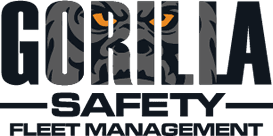| REQUIREMENTS | AOBRD | ELD |
|---|---|---|
| Vehicle connections | Must be “integrally synchronized” with the vehicle (no detailed requirements). | Must use the ECM on MY 2000 or newer vehicle (normally connected to the J-bus or OBD connection) or “other means” if vehicle is older than MY 2000 and/or ECM is not accessible (use by a driver operating a vehicle older than model year 2000 is not required, but it is optional). |
| Automatic data captures | Not required. Data (date, time, and location) must only be captured at duty changes. | Dataset (date, time, location, vehicle miles, engine hours, driver, carrier, vehicle) must be captured at startup and shutdown, login/logout, at every duty change, and once per hour when vehicle is in operation. |
| Driver entries and use | Driver must be able to enter nondriving duty changes, location (if not automatically captured), and edits/corrections. | Driver must be able to enter nondriving duty changes, location (only if prompted when automatic location capture failed), and edits/ corrections. Driver must also have access to all his or her records in the system. |
| Dealing with “special driving time” (such as yard time and personal use) | No required or explained mechanisms. Driver either logs out and driving comes in as unassigned, or asks for or makes corrections to get driving time onto the correct duty line (on duty for yard time and off duty for personal use). | Carrier can allow driver to use “special driving categories” that are built into the ELD (yard time and personal use). These place the driving onto the correct duty line (on duty or off duty) when selected. |
| Verification that system is compliant | Vendor provides user (carrier) with letter certifying the device and system are compliant. | Vendor’s device must be on the FMCSA’s list of approved devices. |
| Driving decision | Vendor/carrier established parameters. | Vehicle reaches 5 miles per hour. |
| Stopped decision | Vendor/carrier established parameters. | Vehicle must be fully stopped for three seconds before any entries are allowed, and the driver must be asked for a duty change if one is not made within 5 minutes of being stopped (if one is not made, the device will place the driver on duty automatically). |
| Display/printout requirement (devices must only do one or the other, not both) | Text list including total hours and miles for today and the previous seven days, and the time and location of all duty status changes for today and the previous seven days. | Header, grid-graph display, and detailed list of data captures that includes driver ID, carrier ID, truck number and VIN, shipment document number or information, current location, unidentified driver driving time, any malfunctions, details of all changes of duty status (event, date, time, location, vehicle miles and hours), and details of any data capture. |
| Use and mounting while driving | System must not allow driver input while driving. No mounting requirements. | System must not allow driver input while driving. Portable display must be mounted within view of the driver when seated in driver’s seat. |
| Roadside inspection process | Driver to provide officer with either display or printout. Printing is not required if device has a display. If officer wants hardcopy of the records, he/she is to contact the carrier and request them. Carrier then has 48 hours to provide the records. | Driver to provide officer with either display or printout. Printing is not required if device has a display. Driver must be able to provide officer with electronic records using one of two communications options, telemetric (web service or email) or local (Bluetooth and USB 2.0). The device must be able to use both methods within the communications option the device uses. |
| Resistance to driver tampering | Must be, to the maximum extent practical, tamperproof. | Must not permit alteration or erasure of the original information or alteration of the source data streams. ELD must support “data integrity check” functions. |
| Indicator of sensor or device failures | Must identify sensor failures. | ELD must have the capability to monitor its compliance (engine connectivity, timing, positioning, etc.) for malfunctions and data inconsistencies. ELD must record these occurrences. |
| Driver and support personnel edits | Driver and supervisors allowed to make edits. System must be able to identify edits and capture “who, when, and why.” Original record and all changes must be retained. | Driver and supervisors allowed to make edits. System must be able to identify edits and capture “who, when, and why.” Driver must review and approve all edits. Changes by supervisors cannot be brought into the official record until approved by the driver. System must retain original record and all changes. |
| Communication of data and records to back office | No detailed requirement. Driver must submit record within 13 days and back office must retain records (and backup copy) once provided by the driver for six months. | No detailed requirement. Driver must submit record within 13 days and back office must retain records (and backup copy) once provided by the driver for six months. |
| Handling of unassigned driving | Record must be retained. | Driver logging into device must be offered any unassigned driving on the device. If driver rejects, unassigned driving must come into carrier’s “unassigned driver account” and must be assigned or explained by the carrier. Records must be retained. |

